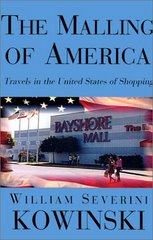It’s been just about nine years since I drove that big Ryder truck off 101 and into Arcata. I’ve lived in a number of different places but except for where I grew up, I’ve never lived anywhere else for this long.
If every cell in your body is replaced in seven years, this place is a big part of me now. I can’t say I’ve ever felt quite at home here, and though it makes me sigh even as I type it, I know it’s partly my own doing, or not doing. But maybe not all.
Anyway, one of the first “jobs” I had here (it’s in parens because I never actually got paid for it, as the promise turned into a hope even before I was finished) was writing a couple of drafts of the script for a video called “Voices of Humboldt County: Cumulative Impact,” including the final draft. I was reminded of this by a news item this week.
This hour or so documentary, now the property of the Humboldt Watershed Council, was a response to the flooding and damage during a winter storm that began as 1996 ended and continued as 1997 began. It was our first winter here, but the worst storm we’ve seen. For a few days, even Arcata was literally cut off from the world---the airport and 101 both closed, and no trains running. That’s when I learned we’re self-sufficient in dairy products, which was some comfort.
The premise of the video was that all this damage was a predictable and traceable result of excessive timber harvests---especially cutting down so many trees on hillsides-- that Pacific Lumber engaged in, to pay down the debt incurred by its new parent company, Maxxam.
The evidence was convincing, and so, as it turned out was the video. I was told it was cited by a judge in one of the court cases in his decision that went against Maxxam.
Among the communities the video discussed were Elk River and Freshwater. Matters pertaining to their situation have been in court ever since, and citizens there have been working their case for eight years. Now, according to Econews, the regional water board has released their draft requirements on waste-discharge, which addresses impacts of logging in their areas. Next up is a battle over a technical report. Now I know why the activist who first got me involved in working on the video decided to go to law school.
One argument against limiting logging was that the logging jobs would disappear and PL would go broke. The video said they were logging recklessly and heedlessly at an unsustainable rate, and they’d go broke anyway. Well, despite some limitations environmentalists and others have managed to encourage, Maxaam kept logging for these nine years and guess what? PL is going broke anyway, apparently because they’ve run out of trees. I suppose if we want to turn the county into forest cemeteries and cement, we can contribute a bit more to Maxaam’s banks.
I was able to help with the video despite the fact that I was new and knew little about the local situation (though I had reported a long piece on Pennsylvania forests for the Philadelphia Inquirer Magazine. Yes, PA has forests---almost 60% of the state is forested, and PA leads the nation in hardwood timber, which is the most valuable in America.) In a way I was able to help because I knew little---I had to ask the questions a total stranger would need to have answered, which helped with my primary goal: clarity. Structure is part of that, and telling a coherent story is usually the best way to organize clearly and compellingly. So that’s what I tried to do in my first draft, which helped the others involved to add their expertise and even get new material and interviews. Based on all that I wrote the final draft.
So for all the time I’ve been here, everything we talked about in that video has been and still is a big part of the work here for sensible logging policy, protection of rivers and salmon, getting rid of harmful pesticides and herbicides. I’m proud of the work I did, even if I didn’t get paid, or included.
R.I.P. 2025
-
In some of the lists of Notable Deaths of 2025 published in various
newspapers and other outlets on the Internet, I'm just starting to see some
names ...
4 days ago








No comments:
Post a Comment